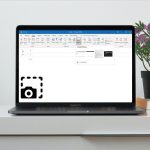In Microsoft Excel, you can only access the headers and footers in Page Layout view, Print Preview or in the Page Setup dialog box. So if you want to add a header and footer in your Excel spreadsheets, here’s how you can do it.
Inserting Headers and Footers in Microsoft Excel in Page Layout View
To include a header or footer in Microsoft Excel, here’s what you should do: Step 1: Launch Microsoft Excel. Step 2: Click on the Insert tab. Step 3: Select the drop-down menu in the Text group. Step 4: Select Header and Footer which will change the worksheet view to Page Layout. Step 5: On your worksheet, place your cursor in the field named Header. At the top of the Ribbon, select the elements for your header (Page Number, Picture, Current Time, Date). Step 6: At the top of the Ribbon in the Navigation field, select Go to Footer to access the bottom margin of the worksheet. Step 7: On your worksheet, place your cursor in the field named Footer. At the top of the Ribbon, select the elements for your footer (Page Number, Picture, Current Time, Date). Step 8: Select the Escape (Esc) key on your keyboard to exit the Header and Footer menu.
Inserting Headers and Footers in Microsoft Excel in the Page Setup Dialog Box
To create a custom header or footer on Excel, you need to access the Page Setup Dialog Box in Excel. Here’s how it works: Step 1: Select the worksheet where the header or footer will be inserted. Step 2: On the Ribbon, select Page Layout. Step 3: On the Field titled Page Setup, click the launcher to view more options. This should open the Page Setup dialog box. Step 4: On the Page Setup box, select the Header/Footer menu. Step 5: Select the button titled Custom Header or Custom Footer. Step 6: On the Left, Center or Right section, input details of your Header or Footer. This can be Page Number, Picture, Current Time, Date. Excel also provides on-screen instructions on editing the content of the header or footer.
Editing Headers and Footers in Microsoft Excel
Editing or changing the header or footer in Microsoft Excel can only be done through the Page Layout View. Here’s how to navigate to the Page Layout view:
Option 1: Change View From the Lower Right Corner of Microsoft Excel
If you’re using Microsoft Excel from your desktop, switching to Page Layout view is quite straightforward. Here’s how to do so: Download Microsoft Excel Step 1: On the lower right corner of Excel also called the status bar, hover your cursor on the icons. Step 2: Select the icon that shows Page Layout View. Step 3: On your worksheet, place your cursor in the Header or Footer field and make changes directly.
Option 2: Change View From the Ribbon of Microsoft Excel
If you’re using Microsoft Excel from the web, this option is more convenient. Here’s how it works. Use Microsoft Excel Online Step 1: On the Ribbon, select View. Step 2: In the field for Workbook Views select Page Layout. This changes the view to the Page Layout view. Step 3: On your worksheet, place your cursor in the Header or Footer field and make changes directly.
Deleting Headers and Footers in Microsoft Excel
If a header or footer is no longer needed on an Excel file, you can always delete it. Here’s how to do so: Step 1: Select the worksheet that you need to delete the header or footer from. Step 2: On the Ribbon, select Page Layout. Step 3: On the Field titled Page Setup, click the launcher to view more options. This should open the Page Setup dialog box. Step 4: On the Page Setup box, select the Header/Footer menu. Step 5: On the Field titled Header, select the drop-down arrow. Scroll up till you see the None option. Step 6: On the Field titled Footer, select the drop-down arrow. Scroll up till you see the None option. Step 7: Save your changes by clicking on OK.
View Microsoft Excel Sheets Side by Side
The function of the Page Layout View is not restricted only to inserting headers and footers in Microsoft Excel. You can also use the tab to view multiple Excel sheets side by side. The above article may contain affiliate links which help support Guiding Tech. However, it does not affect our editorial integrity. The content remains unbiased and authentic.































